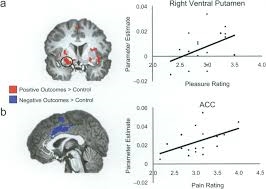Site abandonment has always presented a major challenge for online retailers. Although it would make sense for the abandonment rate to go down over time, research finds the exact opposite is true.
In fact, between Q4 of 2018 and Q2 of 2019, overall conversion rates decreased from 3.23% to just 2.58% – a decrease of 20%. That places the worldwide abandonment rate at about 97.5%.
While we often hear about cart abandonment, a large portion of abandoning shoppers never even make it that far. In reality, ecommerce abandonment can take place at any point in the consumer journey. That’s why it’s so important to address abandonment at all stages – not just after the creation of a cart.
In many ways, ecommerce abandonment is similar to a breakup. Good communication and keeping someone interested in what you’re offering are vital to the relationship. That’s why UpSellit has created its new “Dating Game” infographic. This fun, retro-themed infographic personifies the types of site abandonment, what causes them, and how to get shoppers to stick around.
Similarly to the infographic, this post details the 4 stages of site abandonment and how to prevent shoppers from abandoning at each stage. You can download the infographic to get a deeper understanding of the reasons shoppers leave at each stage and how to turn potential abandonment into a match made in heaven.
Stages of Site Abandonment
Site Bounce
When a visitor “bounces,” it means they left a site after seeing just one page. While a high bounce rate can be common across certain pages (i.e., a privacy policy page, a blog post, etc.) a high sitewide bounce rate is rarely a good thing.
Generally, bounce is caused by a bad first impression, or a page that didn’t meet the user’s expectations. In dating terms, it’s like meeting up with someone you met online – only to discover that their pictures were a little too flattering – to the point of being misleading.
How to Prevent Site Bounce
Lowering your bounce rate is all about creating a good first impression, so you’ll want to focus on having a great site design that’s easy to use, yet visually interesting. Make sure that individual pages are branded to indicate that the user has come to the right place.
In addition, you’ll want to prevent navigation problems at all costs. Make sure the visual hierarchy naturally leads shoppers to the action you want them to take. Finally, put your best foot forward by highlighting your best sellers and highly-rated products front and center.
Product Abandonment
When a visitor abandons on a product page, it means they initially expressed interest, but decided not to move forward with the purchase. There are many reasons for product abandonment, but it often stems from two main sources: comparison shopping and product uncertainty.
The immediacy with which shoppers can compare prices online acts as a double edged sword. While comparison shopping may bring shoppers to your site, it can also take them away as they continue searching for the best price.
Furthermore, unanswered questions about products can lead to shopper hesitation. So if that’s the case, how can you keep visitors from abandoning at this stage in the customer journey?
How to Prevent Product Abandonment
One of the most important steps a site can take to combat product abandonment is using clear, concise product descriptions and plenty of clear product images. Don’t forget, visitors have probably never experienced this product in person; your goal is to make them feel like they have every answer to their potential questions right on their screen.
You can also build trust by incorporating product reviews into your on-site experience. Over 80% of users trust product reviews as much as a recommendation, so even a small bank of reviews can pay off down the road.
Finally, make sure that your product recommendations are highly personalized for each individual shopper. If a visitor is displaying hesitation about a full-priced item, try suggesting similar products from your sale section. Showing the user more options helps ensure they can find a product that suits their needs.
Cart Abandonment
Perhaps the most frequently talked about form of ecommerce abandonment, shoppers leave their carts behind 60-80% of the time. This means that a visitor felt comfortable enough to add products to their cart, but wound up second guessing that decision before moving forward to checkout.
Cart abandonment is often the result of unanswered questions and surprise costs. Fortunately, there are many ways to combat cart abandonment and keep customers on the path to conversion.
How to Prevent Cart Abandonment
One of the most frequently cited causes of cart abandonment is unexpected shipping costs. We’ve written before about the psychology of free shipping and why customers dislike surprise shipping costs so intensely.
When extra costs are tacked on towards the end of a transaction, it’s easy to see why a potential customer might feel duped – even if it’s completely reasonable to charge fees. For that reason, remaining upfront about shipping is the best way to mitigate sticker shock after the user has already added items to their cart.
In-cart customer support is also important to preventing cart abandonment. If a customer has to leave their cart in order to find support, it’s possible they won’t return.
Checkout Abandonment
Checkout abandonment is one of the most frustrating stages of abandonment, as it occurs right before a shopper converts. It can feel like the ecommerce equivalent of being left at the altar.
On the bright side, the causes behind checkout abandonment are often easier to diagnose than other types, since you can see exactly which step in the process caused the user to abandon. Let’s take a look at a few of the most common reasons users break it off in the eleventh hour.
How to Prevent Checkout Abandonment
It’s never a site’s goal to make checkout confusing, but it happens all the time. For instance, many sites still require users to create an account before completing checkout.
While it makes sense that you want as much information about the shopper as possible, now is not the time to go overboard. Ask the bare minimum first (Name, Address, Payment info) and worry about the rest later. Remember, you can always give the user the option to create an account after they order.
In addition, try to use as few pages in checkout as possible. While some checkout processes are shorter, others can feel like an endless slog with no clear end in sight. Using a progress bar on the top of your checkout can give shoppers an idea of where they are in the process, and keep them motivated to complete their order.
Finally, address security concerns by displaying secure badges to demonstrate the different ways you protect the user’s information. Given the amount of information you’re asking for, creating a sense of trustworthiness is vital to making customers feel safe on your site.
Digital & Social Articles on Business 2 Community
(37)



